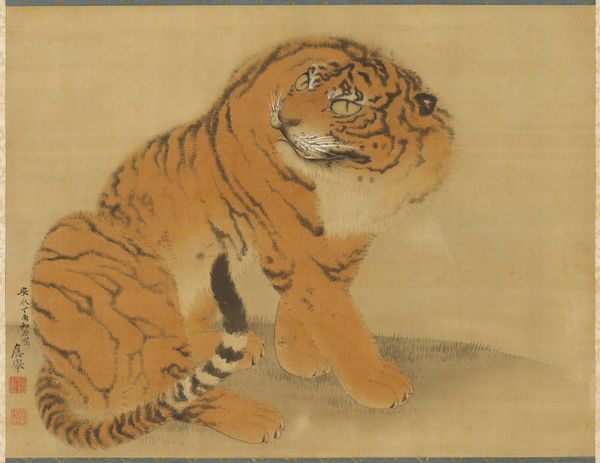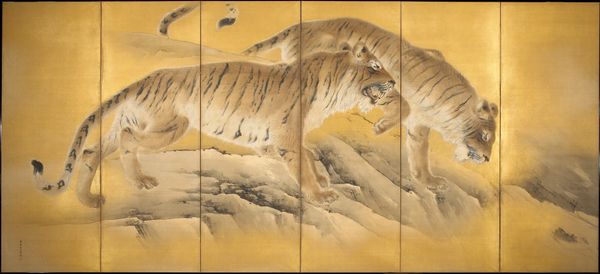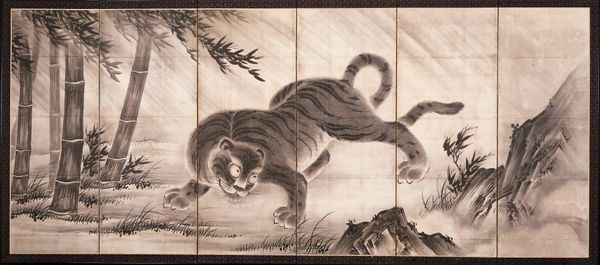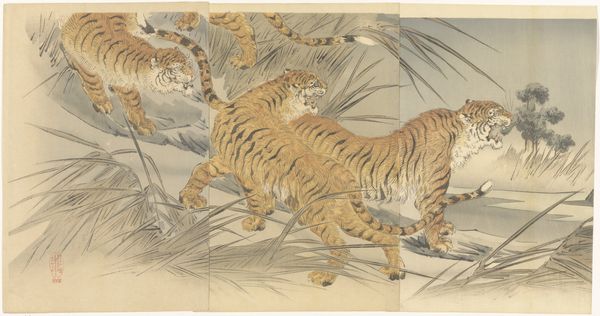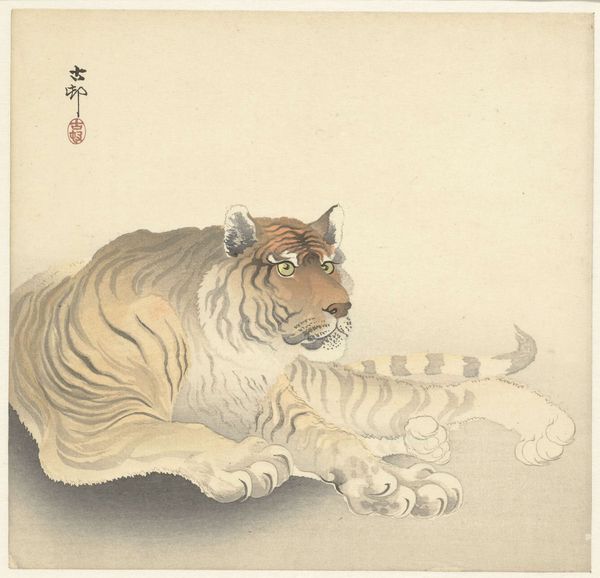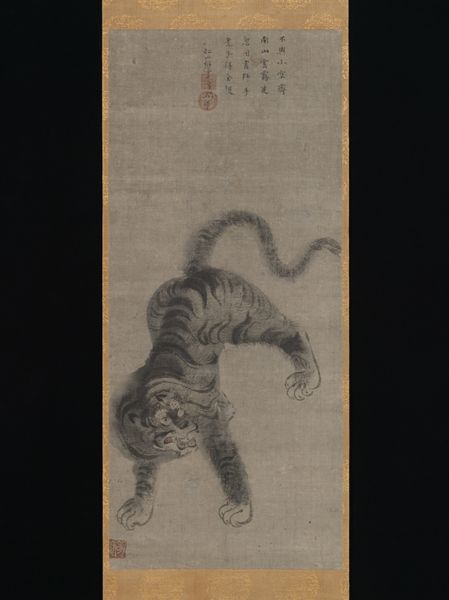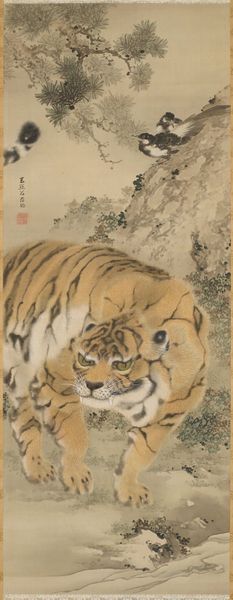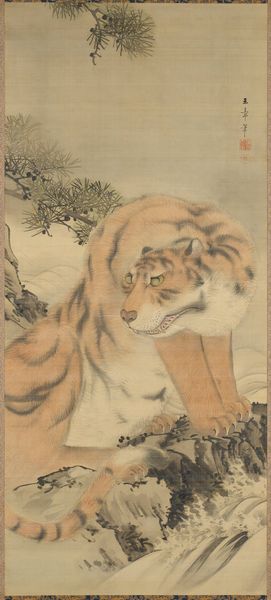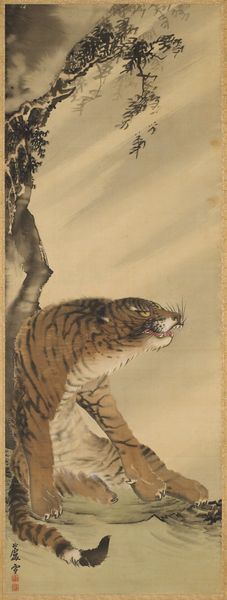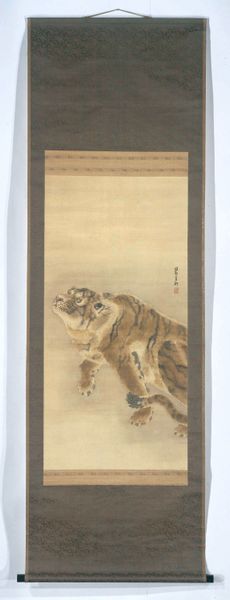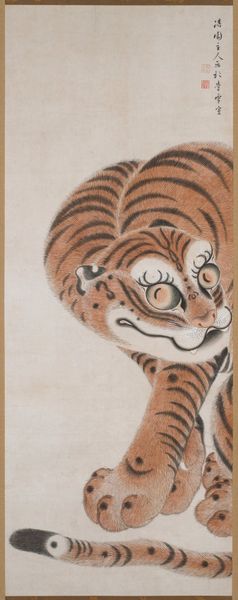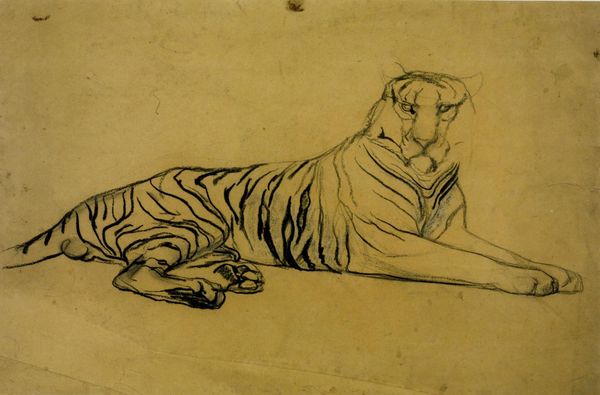
painting, watercolor
#
animal
#
painting
#
asian-art
#
landscape
#
figuration
#
watercolor
#
24_meiji-period-1868-1912
#
remaining negative space
#
realism
Dimensions: Overall (each): 68 1/8 in. × 14 ft. 2 3/4 in. (173 × 433.7 cm)
Copyright: Public Domain
Curator: The imposing presence of "Tiger, Tigress, and Cub," painted around 1892 by Kishi Chikudō, immediately strikes one as both regal and tender. What's your first take? Editor: It’s interesting that you use the word "tender." Visually, the eye is drawn to the mass of golden negative space surrounding the central image. It is very striking, given how detailed the brushwork is on the figures themselves. The textures and variations create a tranquil yet strong presentation. Curator: Yes, that deliberate emptiness contrasts intriguingly with the realism with which the tigers are rendered. Chikudō’s composition offers a study in contrasts—soft waterfall versus sharp claws. These screens, intended for interior spaces, served to both impress upon viewers the might of nature while fitting into the design sensibilities of Meiji-era Japan. Editor: Precisely, the negative space gives power to the maternal aspect and creates an allegorical suggestion. It is important to keep in mind how this piece utilizes the traditions and innovations that characterize much landscape art. Curator: Consider too, the social implications. While overtly a landscape featuring wildlife, "Tiger, Tigress, and Cub" also represents the idealized family and hints at political stability so crucial in the Meiji Restoration period. The strength of the mother tiger symbolized the strength of the nation. Editor: In line with that observation, the realism lends an almost photographic quality, yet this isn’t merely representational; it borders on expression. There’s an emotional current to that maternal gaze, a watchfulness almost unnerving when coupled with the implied power of the tigers. The formal arrangements heighten this, right? Curator: Absolutely, it's a carefully constructed narrative meant to evoke not only appreciation for aesthetic skill, but an understanding of hierarchical power structures and cultural values embedded in Japanese society. Editor: I’m still struck by how it is both portrait and symbolic narrative. Chikudō has harnessed not just observational acuity, but emotional affect in what seems to me, a remarkable pictorial strategy. Curator: And that skill, in communicating through form, remains potent even today. Editor: Indeed. We are grateful that the Metropolitan Museum of Art has made it available for all to reflect upon.
Comments
No comments
Be the first to comment and join the conversation on the ultimate creative platform.

